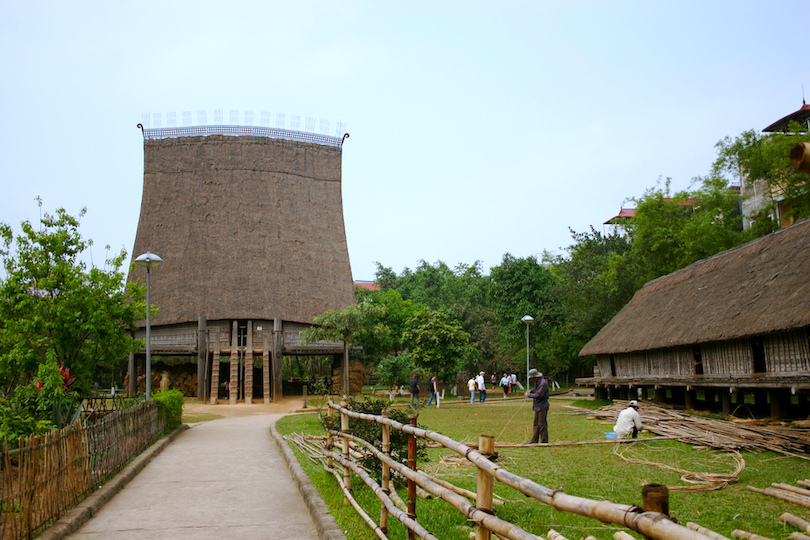Best holiday attractions Hanoi today: For anyone interested in what life must have been like for Hanoi’s locals during an earlier age, a trip to Memorial House is a must-do while in the city. This finely-restored merchant house sits in the old town quarter and has been furnished to look like a typical merchant’s home, brimming with antiques and everyday objects from centuries prior. The house has plenty of traditional architectural features, set between courtyards to give outdoor space and set out according to the ancient tradition of feng shui, which allows good energy flow into the house. In some of the rooms, you can watch traditional craftspeople in residence work at calligraphy and basketry crafts. Discover more info on Hanoi By Locals.
Like many colonial regions that were united by European rule, the country of Vietnam is actually a coagulation of 54 different officially recognized ethnic groups. The Museum of Ethnology strives to give a better understanding of each one, and does so quite elegantly. It is widely believed to be the best of all the modern museums in Vietnam. Displays include a combination of art, everyday objects, and historic artifacts to better tell the story of each unique culture.
Established in 1889, Dong Xuan Market is housed within a four-storey Soviet-style building on the northern edge of Hanoi Old Quarter. It’s also known as Hanoi’s largest indoor market, offering a wide range of goods such as fresh produce, souvenirs, accessories and clothing, as well as electronic and household appliances. Dong Xuan Market has a bustling wet market section on the ground floor, where locals shop for seafood, meat, and vegetables while the back section sells an array of pets (cats, dogs, and fish) and fresh flowers from all across Vietnam. If you’re looking to shop for souvenirs, head to the upper levels, where you can find numerous stalls selling tee shirts, fabrics, school uniforms, handbags, handicrafts, all of which are sold at wholesale prices.
The final resting place of Vietnamese communist leader Ho Chi Minh sits in Ba Dinh square, the location where he read the nation’s declaration of independence in 1945. This tall, blocky pillared building is modeled after Lenin’s crypt in Moscow and meant to evoke a traditional communal house, though to many tourists it looks like a concrete cubicle with columns. Contrary to his desire for a simple cremation, the embalmed body is on display in plexiglass casing, and a dress code of long sleeves and pants is required to visit. The mausoleum is closed for a couple months around the end of the year, when the body goes to Russia for maintenance.
Dive into Hanoi’s pulsating city streets, and you’ll capture the essence of Vietnamese life. The country’s capital is a burgeoning economic center that still clings strongly to traditional culture, managing to be a showcase of both old and modern Vietnam. The old quarter district is Hanoi’s main tourist attraction. It hums with street vendor action and the cafés and restaurants are vibrant, contemporary scenes. Just trying to cross a road here can end up being an adrenaline-fueled escapade. The backstreets here are a great opportunity to soak up the buzz of Hanoi street life. As well as there being plenty of street food on offer and lots of pavement vendors selling fruits and vegetables, there are also stalls selling traditional medicines and Buddhist religious trappings. Discover more information on https://hanoibylocals.com/.
Standing in the heart of Hanoi, the opera house was located in a beautiful intersection downtown, where five main city roads lead to. Completed in 1911 after 10 years of construction, by two French architects, Hanoi Opera House resembles the Opéra Garnier de Paris. In August 1945, the Opera House Square was the political center of the country during the revolutionary days. Since then, Hanoi Opera House has always been the center of important conferences, meetings and art performances by art troupes domestically and internationally.
